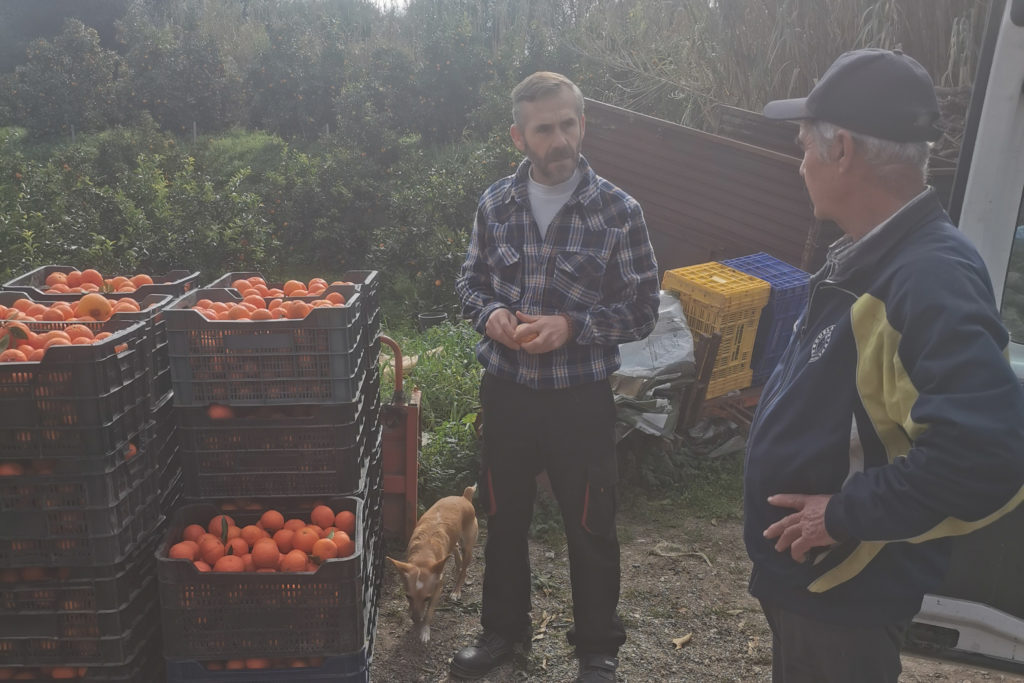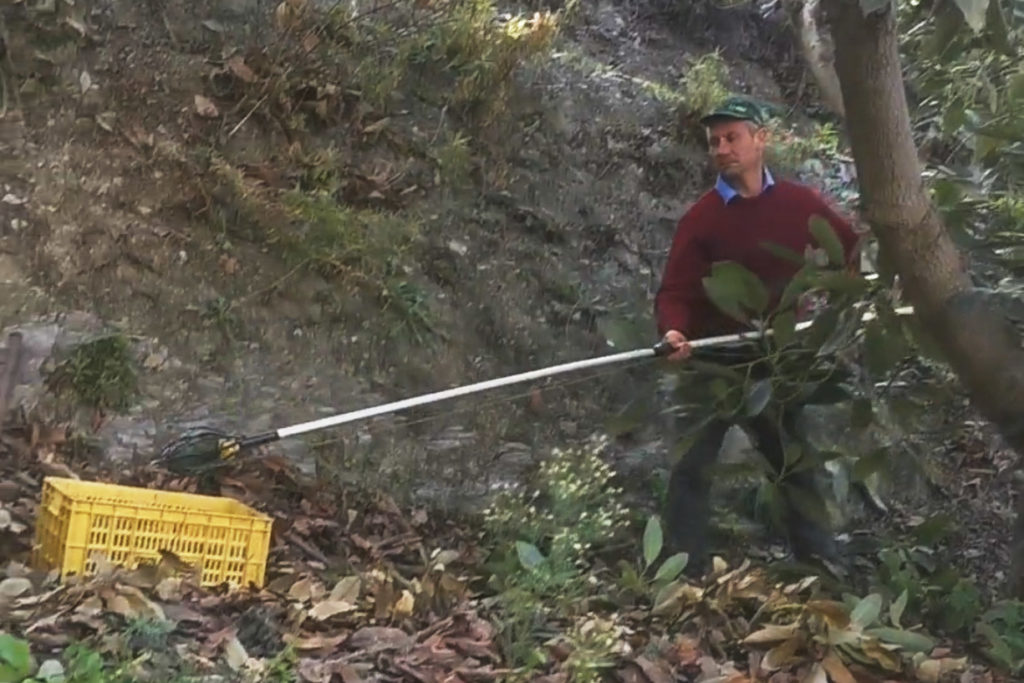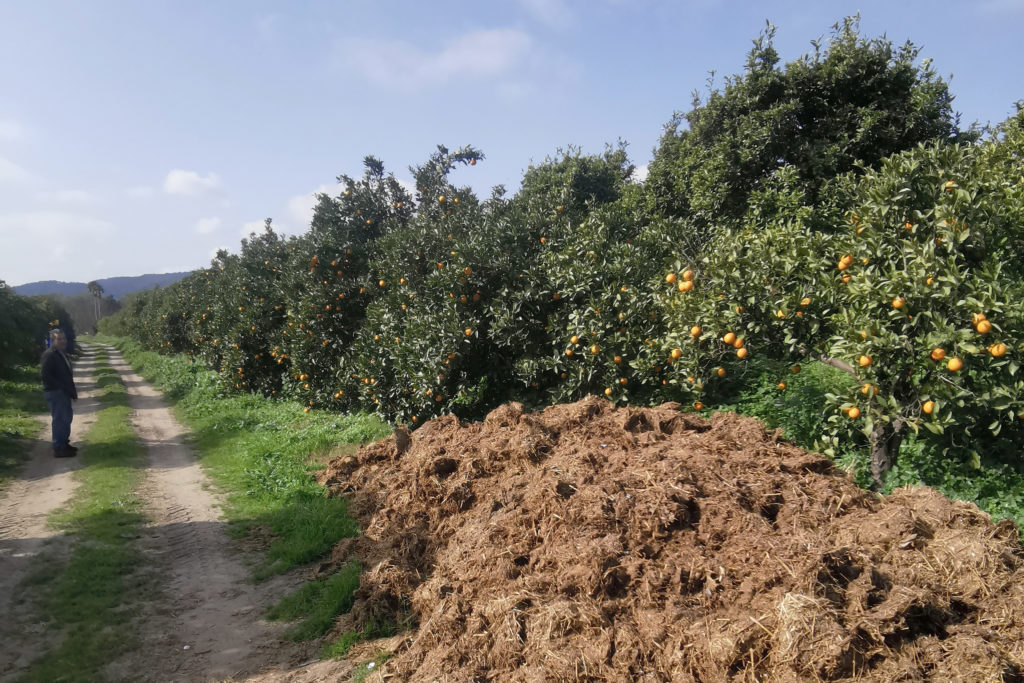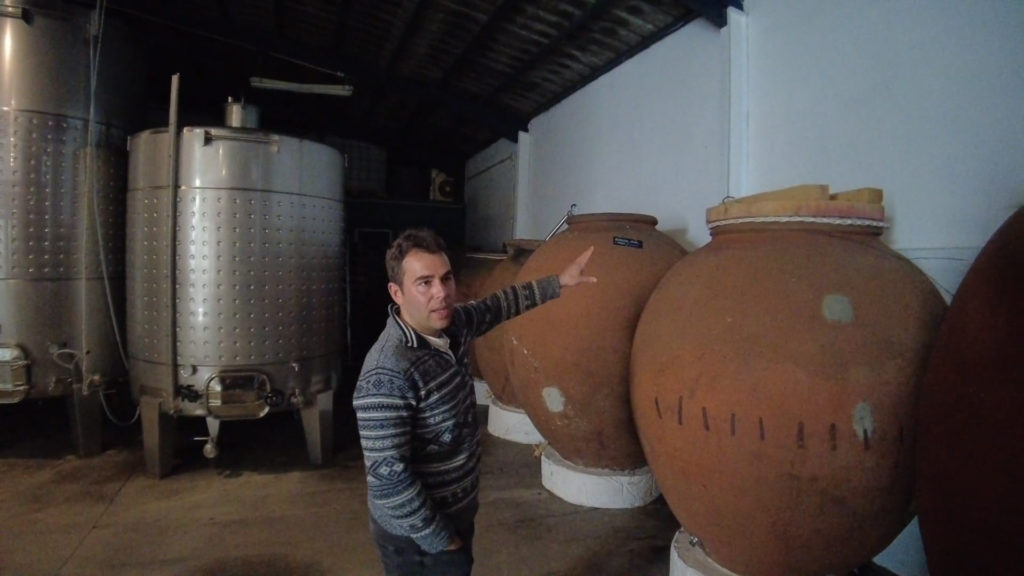Visiting Carlos Márquez’s farm last week, is nestled deep in a valley just a few kilometres from the Mediterranean coast East of Malaga, I was struck by the abundance of the land despite the incredibly dry season they are having here. While Carlos and all the farmers around have been forced to occasionally irrigate their orchards during this dry autumn and winter, only Carlos out of all his neighbours has green everywhere, and not just on the leaves of the avocado and mango trees. It is clear life is thriving here, especially when you compare the green terraces of Carlos to the brown, bare terraces of his neighbours. Carlos is certified organic but his farming methods go way beyond what is required by the rules of organic.
As I learned as we toured the farm, for Carlos, the more life on the farm the better. As we walked along a terrace planted with avocados on the north facing side of the farm, Carlos happily pulled grass and succulents growing out of the stone walls to bring back to feed to his flock of chickens at the farmhouse. On the south side he harvested a perennial grass he had planted on the terrace edges to use as a mulch and fertiliser for the mango trees. A bit higher up we came to his family vegetable garden, planted in a sunny spot with views to the sea and just above an incredible carob tree. The newly transplanted tomato seedlings (in January!!) dwarfed by the massive branches of the carob.
The farm has been in Carlos’ family for generations, and before the arrival of powerful water pumps to allow irrigation up the hillsides, most of the farm was ‘dry-land’ farming. Here that meant olives, vines and almonds. However, the yields of these being variable year to year and relatively low, the family also kept goats, who wintered down here in the valley and were taken up to the Sierra in the summer months. This is where the carob tree comes in, for the carob is a wonderful feed for ruminant animals, being high in protein and in fibre.
The carob is native to the Mediterranean region, and is a wonderfully well adapted tree. It grows slowly but persistently in most conditions, from semi-arid to sub tropical to marginal, rocky or salty land. It looks after its own needs, not requiring irrigating or fertilising and is rarely pruned. Its pods, which are sweet and loved by livestock, take a full year to develop on the tree. Once harvested and dried, they can be stored and fed throughout the year, and in years of crop failure are used for human food. The carob was revered by peasants from Israel to Malta to Morocco and since at least 4000 BC has been an important animal feed crop throughout the coastal Mediterranean region.
There are 6 carob trees on Carlos farm from the time of his grandparents. The particular one below us his father wanted to take out when they started planting mangos on the nearby terraces 6 years ago. Why would you keep a tree that has no more use (because there are no more goats on the farm), he asked Carlos? Carlos replied, in the carobs defence, that as it wasn’t hurting anyone, nor did it require any water or fertiliser, then he would leave it there as he would the others on the farm.
Carlos and I walked down to the carob tree to have a look. He told me as we walked that this year the carob pod crop was the most profitable crop per hour worked. In the last few years organic carob pods have become much in demand as a chocolate substitute in baking and other products, and the price is relatively high. All Carlos has to do is harvest them, no other work involved. Of course, 6 trees are not going to make him rich, but he is glad that they can do their little bit towards the economic viability of the farm, just as they did in his grandparents time.
Standing underneath the carobs branches however, I understand why Carlos chose not to chop these trees down. Nothing to do with future economic benefits and everything do to with the philosophy that Carlos has in regards to farming. All life is good. And there is something very special about these carob trees, something wild and also welcoming about them that the well pruned avocado and mango trees don’t share. They have a shared family history with Carlos, and they will be part of the farms future as it further develops under Carlos loving care.
I break the silence, as we stand in the shade admiring the carob tree, not sure if Carlos is of the same mind as me. “Carlos – I say – maybe this sounds a bit strange, but standing here this carob feels to me like some sort of sacred tree”. “Sacred?” he replies in a matter of fact way, “of course it is”. And with that he turns and walks back down the hill to the farmhouse, leaving me to ponder the complexity and the beauty of this regenerative farm, in many ways embodied in this sacred carob tree.
Confirmed father, alleged farmer, an occasional writer, undoubted if undistinguished linguist, shameless traveller, unreformed poet of the Chinese recluse type.







